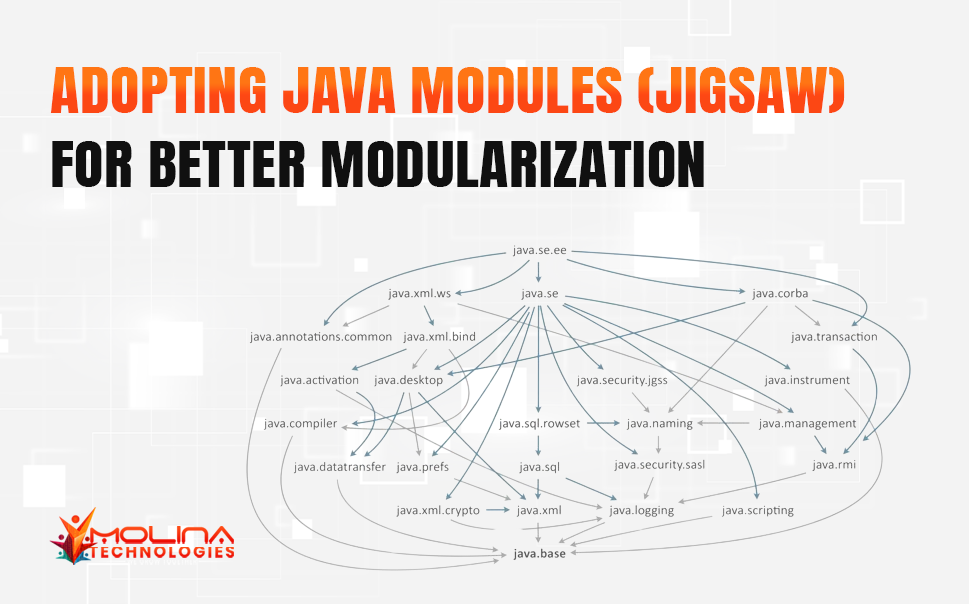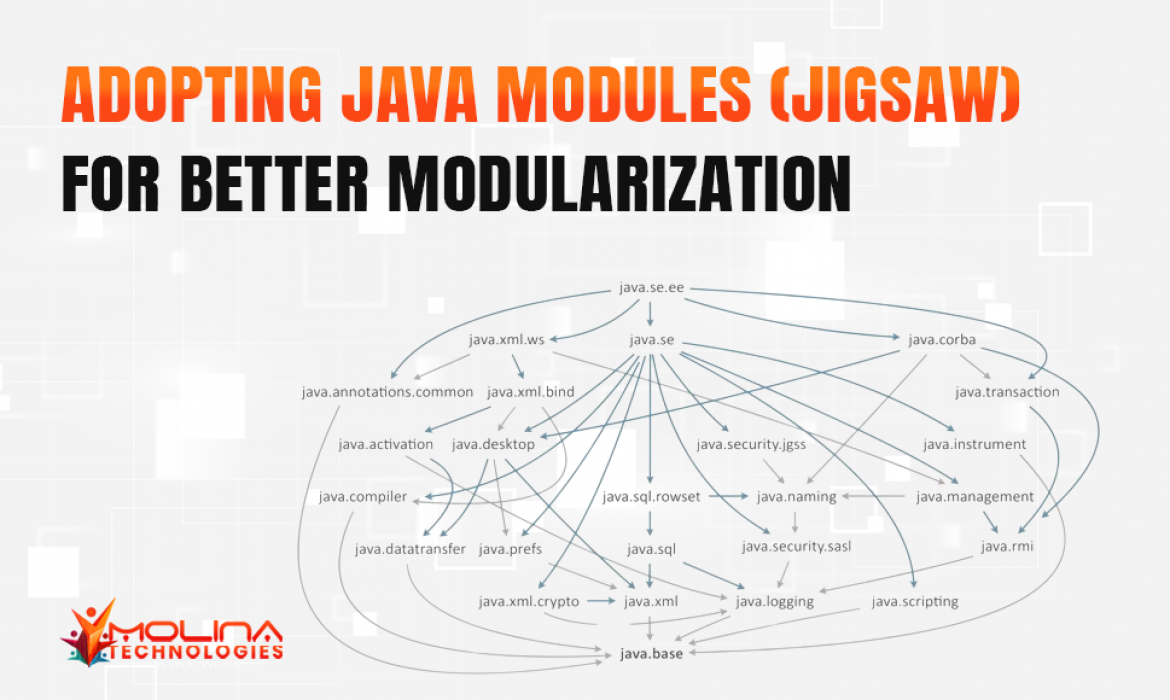
Java modules have revolutionized the way Java applications are built, offering better security, modularization, and scalability. In modern software development, organization and maintainability are key. Without proper structure, large applications become difficult to manage, prone to errors, and challenging to scale.
Before Java 9, developers relied on packages to structure code. However, packages lacked true isolation and encapsulation, leading to dependency conflicts, security vulnerabilities, and complex classpaths.
With Java Platform Module System (JPMS), also known as Project Jigsaw, developers can create self-contained, independent modules, making Java applications:
- More Secure – Modules restrict access to internal APIs.
- Easier to Maintain – Dependencies are explicitly defined, reducing runtime errors.
- More Scalable – Teams can develop and test modules independently.
- Better Optimized – Applications can load only the required modules, reducing overhead.
Think of JPMS as a jigsaw puzzle where each module is a well-defined piece that interconnects seamlessly, creating a fully structured and maintainable Java application.

Key Advantages of Java Modules
1️. Java Modules for Encapsulation & Security
Modules act as self-contained units, defining what other modules can access. This improves code security and prevents unauthorized access to internal components.
- Better Data Protection – Developers can define which classes and packages are visible to other modules.
- Stronger Access Control – Sensitive logic remains hidden, reducing the risk of security vulnerabilities.
2. Improved Dependency Management
Before JPMS, managing dependencies was complex and error-prone, often leading to missing or conflicting dependencies.
With Java modules, dependencies are explicitly declared, preventing accidental imports of unnecessary libraries.
- No More Classpath Conflicts – Modules use the module descriptor (module-info.java) to define dependencies.
- Automatic Dependency Resolution – Java validates module dependencies at compile time, reducing runtime errors.
3️. Simplified Classpath Handling
In traditional Java development, the classpath could become long, difficult to manage, and error-prone.
With JPMS, each module specifies its dependencies explicitly, eliminating the need for complex classpath configurations.
- More Organized Codebase – Each module knows exactly what it needs to function.
- No Hidden Dependencies – No need to manually configure JAR files and external libraries.
4️. Java Modules for Faster & Efficient Development
By isolating modules, teams can develop, test, and deploy different parts of the application independently.
- Parallel Development – Teams can work on different modules simultaneously without breaking the application.
- Easier Debugging – Since modules are independent, troubleshooting specific issues becomes easier.
- Modular Testing – Each module can be unit-tested separately, improving overall code quality.
5️. Optimized Performance & Lightweight Applications
With JPMS, applications load only the necessary modules, improving startup time and runtime efficiency.
- Reduces Memory Usage – No unnecessary libraries are loaded.
- Boosts Application Speed – Modules optimize performance based on actual dependencies.
Understanding Java Module Types
JPMS provides different module types to handle various development needs:
1️. Named Java Modules
- These are explicitly defined using module descriptors (module-info.java).
- Example:
java
CopyEdit
module com.example.myapp {
requires java.sql;
exports com.example.services;
}
2️. Automatic Java Modules
- Created from existing JAR files without modification.
- Ideal for gradually migrating legacy applications to JPMS.
3️. Unnamed Java Modules
- Used when Java code doesn’t explicitly define a module.
- Mainly for compatibility with non-modularized libraries.
4️. Open Java Modules
- Provide public APIs that can be accessed by other modules.
- Useful for frameworks and libraries.
5️. Modular Java Services
- Allow modules to offer services dynamically at runtime.
- Example: A logging module can provide logging functionality to other modules without static dependencies.

Challenges & Considerations When Adopting JPMS
Although JPMS offers major benefits, transitioning to Java modules requires some initial effort.
1️. Migrating Legacy Code – Older applications may need refactoring to adopt a modular structure.
2️. Learning Curve – Developers must understand module descriptors (module-info.java).
3️. Dependency Management – Some third-party libraries may not be modularized yet.
Despite these challenges, adopting JPMS results in long-term efficiency, better maintainability, and higher security.
MolinaTek: Your Partner in Building Modular Masterpieces
Understanding and implementing Java modules effectively can be challenging, but MolinaTek is here to help.
At MolinaTek, we provide:
- Expert Java Training – Learn JPMS concepts, best practices, and real-world implementation.
- Code Modernization Support – Help in migrating legacy Java applications to a modular architecture.
- Consulting & Workshops – Hands-on guidance in modular development, dependency management, and performance optimization.
Ready to unlock the full potential of Java modules? Contact MolinaTek today and start building scalable, secure, and maintainable Java applications!
Frequently Asked Questions (FAQs)
Java modules provide better encapsulation, dependency management, and security compared to packages, making applications more scalable and maintainable.
Since only the required modules are loaded, applications use less memory, start faster, and reduce unnecessary overhead.
Yes! JPMS supports automatic modules, allowing developers to gradually migrate existing applications to a modular structure.
Some challenges include refactoring legacy code, managing dependencies, and understanding module descriptors (module-info.java).
MolinaTek offers expert training, code modernization services, and consulting to help businesses transition to JPMS seamlessly.

